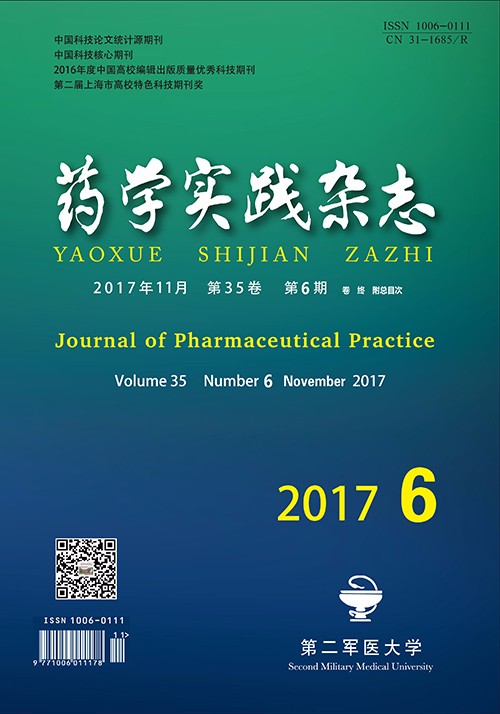|
[1]
|
Liu C, Bayer A, Cosgrove SE, et al. Clinical practice guidelines by the infectious diseases society of America for the treatment of methicillin-resistant Staphylococcus aureus infections in adults and children[J]. Clin Infect Dis, 2011,52(3):e18-e55. |
|
[2]
|
Truong J, Levkovich BJ, Padiglione AA. Simple approach to improving vancomycin dosing in intensive care:a standardised loading dose results in earlier therapeutic levels[J]. Intern Med J, 2012,42(1):23-29. |
|
[3]
|
万古霉素临床应用剂量专家组. 万古霉素临床应用剂量中国专家共识[J]. 中华传染病杂志, 2012,30(11):641-646. |
|
[4]
|
桑德福. 热病:桑德福抗微生物治疗指南[M]. 范洪伟译. 44版.北京:中国协和医科大学出版社, 2014:96-109. |
|
[5]
|
Martin JH, Norris R, Barras M, et al. Therapeutic monitoring of vancomycin in adult patients:a consensus review of the American society of health-system pharmacists, the infectious diseases society of America, and the society of infectious diseases pharmacists[J]. Clin Biochem Rev, 2010,31(1):21-24. |
|
[6]
|
van Hal SJ, Fowler VJ. Is it time to replace vancomycin in the treatment of methicillin-resistant Staphylococcus aureus infections?[J]. Clin Infect Dis, 2013,56(12):1779-1788. |
|
[7]
|
Roberts JA, Abdul-Aziz MH, Lipman J, et al. Individualised antibiotic dosing for patients who are critically ill:challenges and potential solutions[J]. Lancet Infect Dis, 2014,14(6):498-509. |
|
[8]
|
Rostas SE, Kubiak DW, Calderwood MS. High-dose intravenous vancomycin therapy and the risk of nephrotoxicity[J]. Clin Ther, 2014,36(7):1098-1101. |
|
[9]
|
Arimura Y, Yano T, Hirano M, et al. Mitochondrial superoxide production contributes to vancomycin-induced renal tubular cell apoptosis[J]. Free Radic Biol Med, 2012,52(9):1865-1873. |
|
[10]
|
Mulazimoglu L, Drenning SD, Yu VL. In vitro activities of two novel oxazolidinones (U100592 and U100766), a new fluoroquinolone (trovafloxacin), and dalfopristin-quinupristin against Staphylococcus aureus and Staphylococcus epidermidis[J]. Antimicrob Agents Chemother, 1996,40(10):2428-2430. |
|
[11]
|
Jacqueline C, Caillon J, Le Mabecque V, et al. In vitro activity of linezolid alone and in combination with gentamicin, vancomycin or rifampicin against methicillin-resistant Staphylococcus aureus by time-kill curve methods[J]. J Antimicrob Chemother, 2003,51(4):857-864. |
|
[12]
|
Singh SR, Bacon AR, Young DC, et al. In vitro 24-hour time-kill studies of vancomycin and linezolid in combination versus methicillin-resistant Staphylococcus aureus[J]. Antimicrob Agents Chemother, 2009,53(10):4495-4497. |
|
[13]
|
Chiang FY, Climo M. Efficacy of linezolid alone or in combination with vancomycin for treatment of experimental endocarditis due to methicillin-resistant Staphylococcus aureus[J]. Antimicrob Agents Chemother, 2003,47(9):3002-3004. |
|
[14]
|
Beibei L, Yun C, Mengli C, et al. Linezolid versus vancomycin for the treatment of gram-positive bacterial infections:meta-analysis of randomised controlled trials[J]. Int J Antimicrob Agents, 2010,35(1):3-12. |
|
[15]
|
穆玉, 范春芳, 朱铁梁, 等. 重症患者利奈唑胺所致血小板减少危险因素分析[J]. 中国感染与化疗杂志, 2012,12(1):10-14. |
|
[16]
|
Kalil AC, Metersky ML, Klompas M, et al. Executive summary:management of adults with hospital-acquired and ventilator-associated pneumonia:2016 Clinical Practice Guidelines by the Infectious Diseases Society of America and the American Thoracic Society[J]. Clin Infect Dis, 2016,63(5):575-582. |
|
[17]
|
Zelenitsky SA, Harding GK, Sun S, et al. Treatment and outcome of Pseudomonas aeruginosa bacteraemia:an antibiotic pharmacodynamic analysis[J]. J Antimicrob Chemother, 2003,52(4):668-674. |
|
[18]
|
Kato H, Hagihara M, Hirai J, et al. Evaluation of Amikacin Pharmacokinetics and Pharmacodynamics for Optimal Initial Dosing Regimen[J]. Drugs RD, 2017,17(1):177-187. |
|
[19]
|
Duszynska W, Taccone FS, Hurkacz M, et al. Therapeutic drug monitoring of amikacin in septic patients[J]. Crit Care, 2013,17(4):R165. |
|
[20]
|
付双双, 唐惠林, 段京莉. 抗感染药物治疗药物监测的Meta分析[J]. 中国新药杂志, 2013,22(15):1840-1848. |
|
[21]
|
梅清, 喻婷, 朱玉林, 等. 万古霉素单用及联合利福平或磷霉素对耐甲氧西林金黄色葡萄球菌防耐药突变浓度的研究[J]. 中国药理学通报, 2011,27(7):944-947. |
|
[22]
|
胡文, 邓国泉, 伍婷, 等. 万古霉素单用与联用磷霉素治疗耐甲氧西林金黄色葡萄球菌肺部感染的疗效比较[J]. 实用中西医结合临床, 2012,12(4):6-7. |
|
[23]
|
中华医学会呼吸病学分会《雾化吸入疗法在呼吸疾病中的应用专家共识》制定专家组. 雾化吸入疗法在呼吸疾病中的应用专家共识[J]. 中华医学杂志, 2016,96(34):2696-2708. |







 DownLoad:
DownLoad: